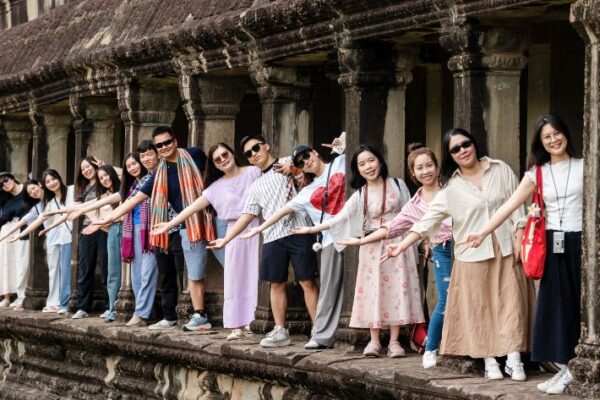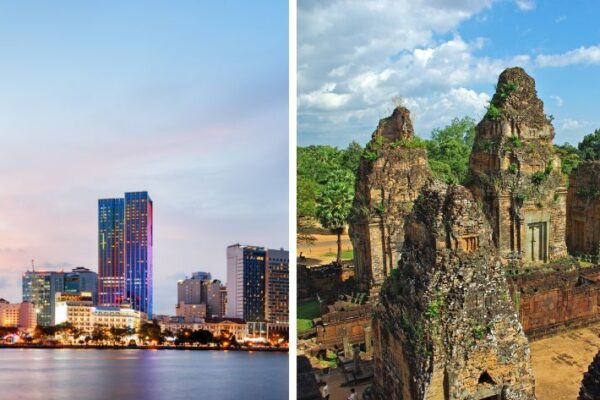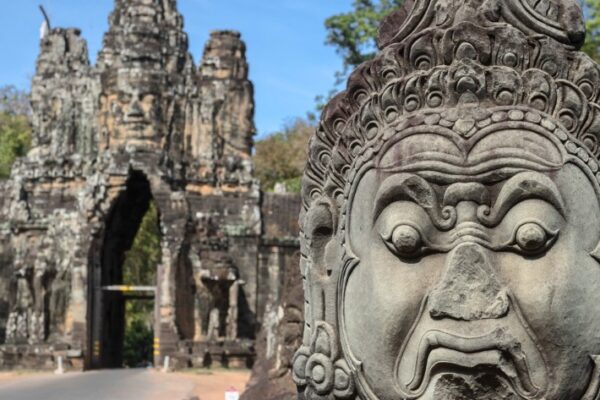The Best Way to See Angkor Wat: A Local Guide’s Step-by-Step Plan

With its ancient grandeur, spiritual significance, and awe-inspiring beauty, Angkor Wat stands as one of Southeast Asia’s most remarkable travel experiences. But to truly unlock its magic, it’s not just about visiting — it’s about visiting the right way.
From knowing when to go and what to wear, to choosing how you will explore the vast temple complex, planning thoughtfully can transform a good visit into an unforgettable one. Whether you’re a history lover, a photographer, or a first-time traveler, this guide will show you the best way to see Angkor Wat — comfortably, respectfully, and with meaningful insight.
Preparing for Your Visit to Angkor Wat
Before setting foot in the awe-inspiring Angkor Archaeological Park, a little preparation will go a long way in ensuring your experience is smooth, meaningful, and memorable. Here’s everything you need to know to get started.
Understanding the Angkor Pass
To enter the Angkor Archaeological Park, every foreign visitor must purchase an Angkor Pass, also known as the Angkor Wat Ticket. These passes are issued exclusively at the Angkor Ticket Office (Angkor Enterprise), located on Road 60, about 4 kilometers from Siem Reap town center. Tickets bought elsewhere are not valid and may result in fines or denial of entry.
Pass options and prices:
- 1-Day Pass – $37 USD
- 3-Day Pass – $62 USD (valid for any three days within a 10-day period)
- 7-Day Pass – $72 USD (valid for any seven days within a 30-day period)
Pro tip: If you purchase your ticket after 5:00 PM, it will be valid for the next day, but you can still enter the park that same evening to enjoy the sunset.
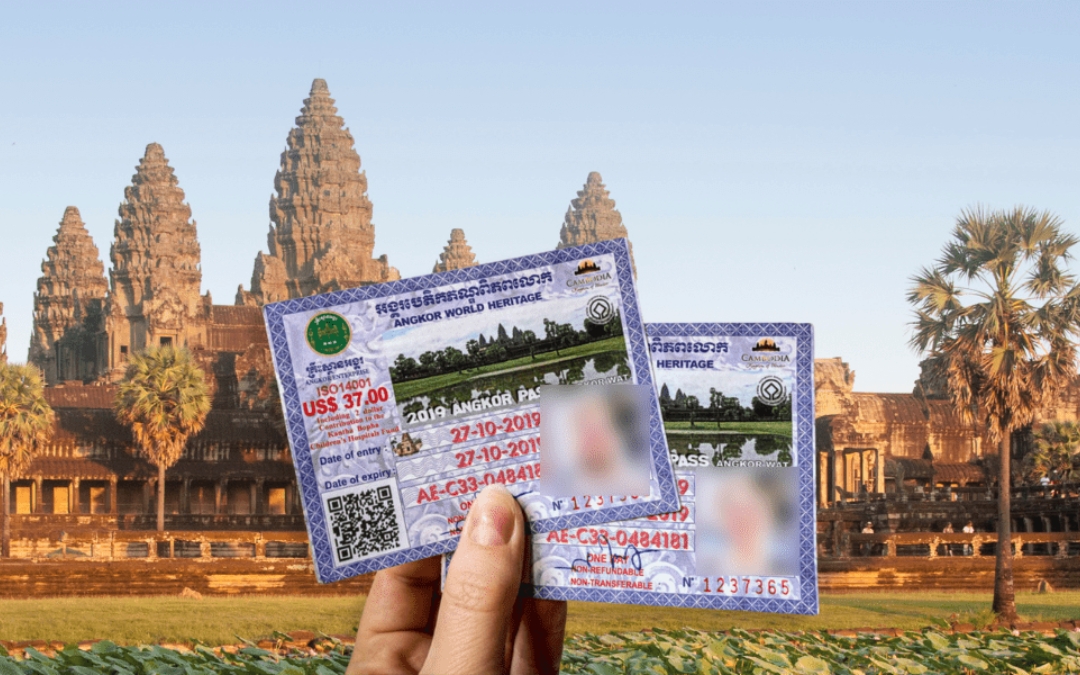
Travelers must purchase an Angkor Pass before entering the temple complex.
Where and how to buy: The Angkor Ticket Office is open daily from 5:00 to 17:30, all year round. Upon arrival, simply approach one of the counters and choose your desired pass. A quick photo will be taken and printed on your pass — this helps prevent misuse.
Payment methods: Cash (USD, Khmer Riel, Thai Baht, Euro) and major credit cards (Visa, MasterCard, UnionPay, JCB, Discover, Diners Club) are accepted. Note that change is typically returned in US dollars or Khmer riel.
There are also ATMs on site, plus a few small shops and cafés where you can grab essentials like sunscreen, snacks, or a rain poncho before heading to the temples.
Important regulations:
- Tickets are non-transferable and non-refundable. Lost tickets must be repurchased.
- Keep your pass with you at all times — it will be checked frequently.
Children under 12 enter free, but bring a passport for proof of age. - Your Angkor Pass also grants access to temples beyond Angkor Wat, including Roluos Group, Wat Athvea, and Phnom Krom.
- Separate entrance fees apply to Beng Mealea ($5), Koh Ker ($10), and Phnom Kulen ($20).
Best Time to Visit
Cambodia’s climate plays a significant role in how you will experience Angkor Wat. For the most comfortable visit, aim to travel during the dry season, from November to March. During these months, the temperatures are cooler and skies clearer — perfect for temple exploration and photography.
To avoid the heaviest crowds, consider visiting:
- At sunrise (from 5:00 AM), especially at Angkor Wat and Srah Srang
- During lunch hours (around 11:30 AM – 1:30 PM), when many tour groups break for food
These time slots offer quieter moments and softer lighting, making the ruins even more magical.
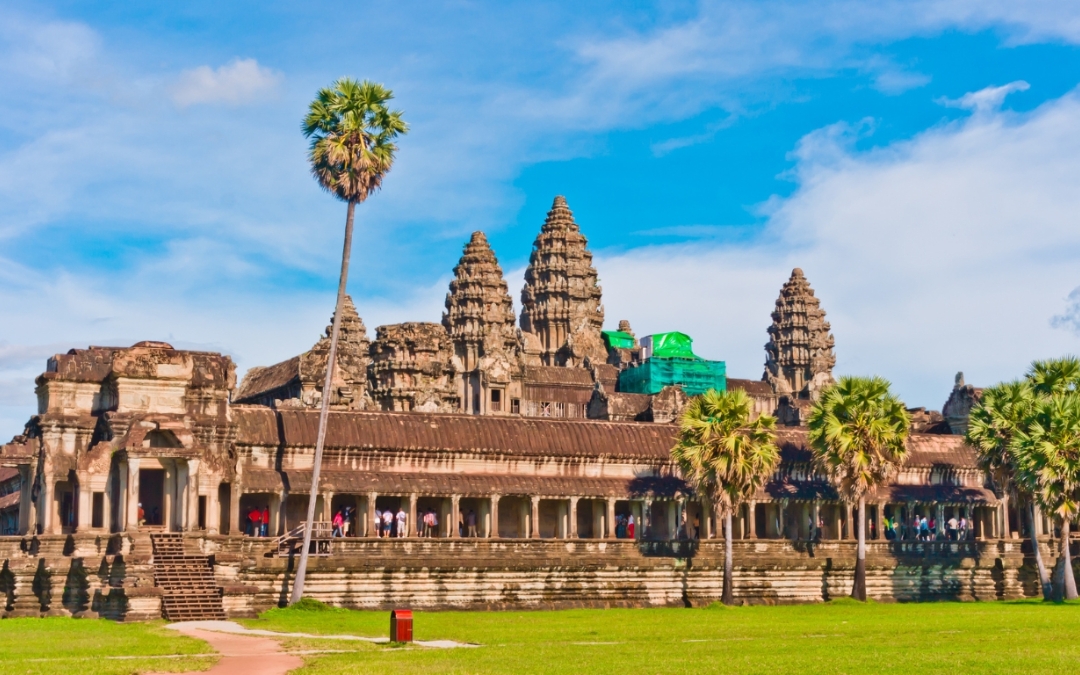
Early morning offers cooler weather and fewer crowds at Angkor Wat.
Dress Code
Angkor Wat and its surrounding temples are active religious sites, so dressing respectfully is not just recommended — it’s required. Visitors who don’t adhere to the dress code may be denied entry to certain areas.
Here’s what you should wear:
- Clothing that covers your shoulders and knees — no tank tops, shorts, or miniskirts.
- Lightweight and breathable fabrics such as cotton or linen help manage the tropical heat.
- A hat and sunglasses for sun protection, and don’t forget comfortable walking shoes — you will be on your feet a lot.
- Avoid see-through clothing — even if you’re covered, sheer fabrics are considered inappropriate at sacred sites.
- Bring a scarf or sarong as a backup. It can be useful for additional coverage or shade, and many visitors find it convenient.
- Wear natural or neutral colors — bright or flashy outfits can feel out of place in the serene, spiritual atmosphere of the temples.
Staying respectful of local customs ensures a better experience for everyone, and you will find temple staff and monks appreciate the gesture.
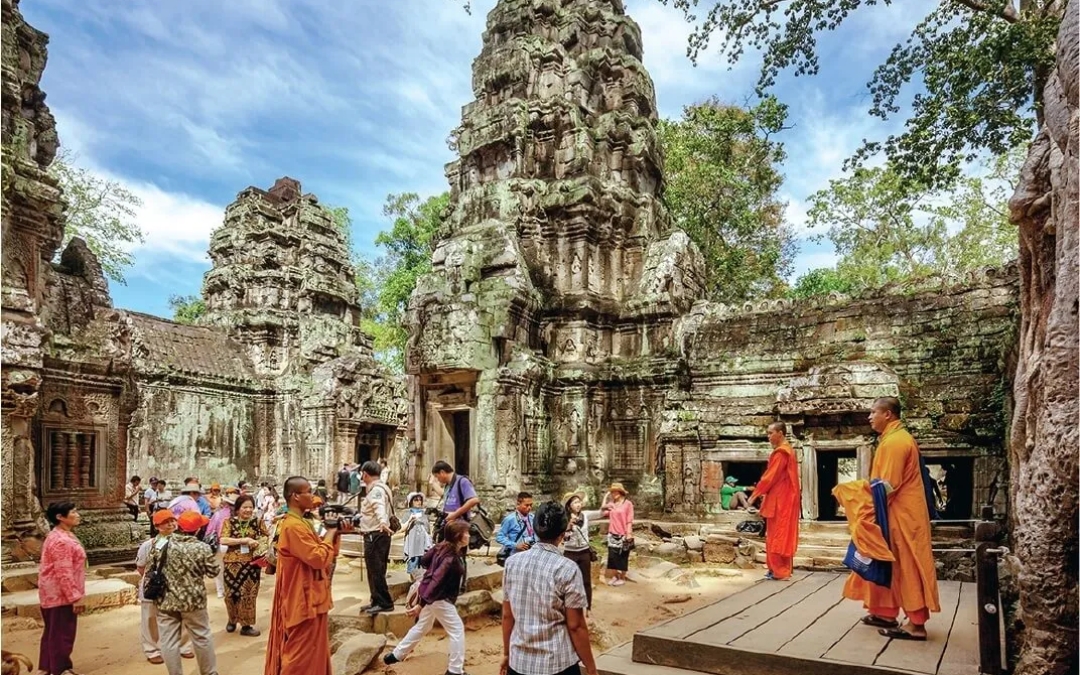
Visitors should wear modest clothing covering shoulders and knees.
>> Read More: Best Time To Visit Cambodia
Choosing Your Mode of Exploration
Angkor Archaeological Park spans over 400 square kilometers, so how you choose to explore can greatly shape your experience. Whether you want deep historical insight, total freedom, or something in between, there’s an option that suits your travel style.
Guided Tours vs. Independent Exploration
- Guided Tours
Hiring a knowledgeable local guide can significantly enhance your visit. Guides provide rich historical context, stories, and symbolism that you might otherwise miss, bringing the ruins to life in a way that signs and books simply can’t. Many experienced travelers recommend booking a guide through your hotel or guesthouse, which ensures reliability and helps support local professionals.
A guided tour is especially valuable for first-time visitors or anyone with a deep interest in Khmer history and architecture. Guides often tailor the route based on your interests, and many speak excellent English or other major languages.
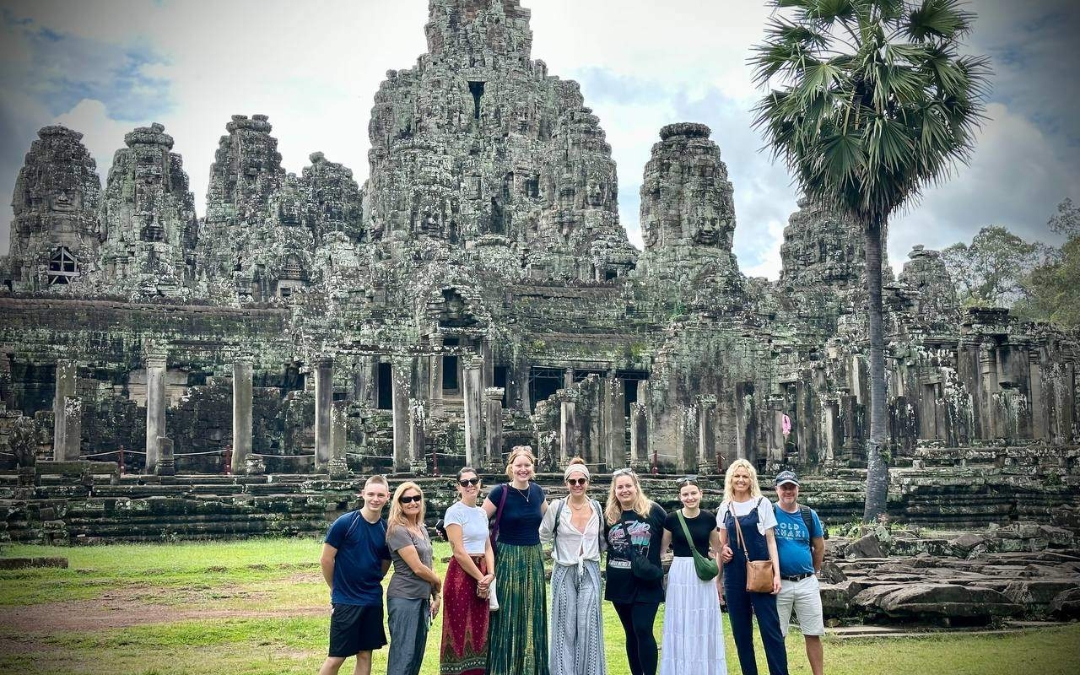
Local guides provide rich historical context during your temple visit.
- Independent Exploration
Prefer to explore at your own pace? Many travelers opt to tour the temples independently, with a map or app in hand. This option offers maximum flexibility, letting you linger where you like or take detours on a whim. However, without a guide, it’s easy to miss out on historical details and lesser-known temple features.
If you choose to go solo, consider doing a bit of research beforehand or bringing a well-rated temple guidebook to make the most of your journey.
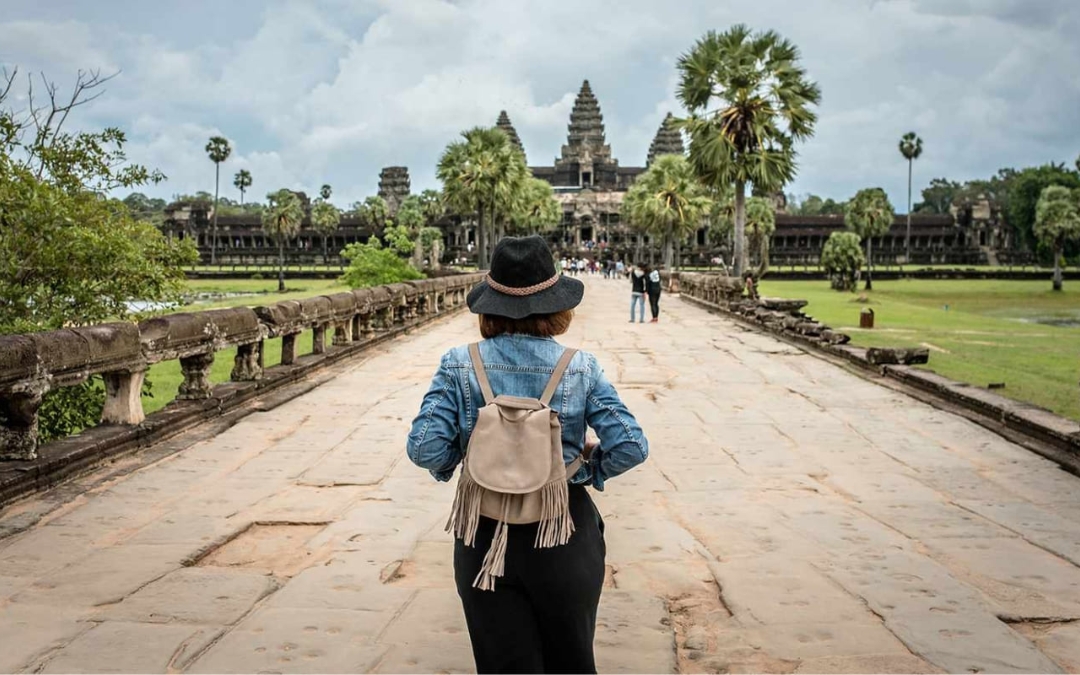
Many tourists prefer exploring the vast grounds at their own pace.
Transportation Options
Because of the park’s size, transportation is essential. The choice depends on your budget, comfort level, and how much time and energy you want to invest.
Tuk-Tuk
The classic and most popular way to explore Angkor. Tuk-tuks are budget-friendly, offer open-air comfort, and provide a relaxed way to move between temples. Most drivers are locals who know the layout of the park well and may offer helpful tips or even informal commentary.
Tuk-tuks can be arranged through your hotel, online, or directly on the street in Siem Reap. A full-day hire usually ranges from $15–$25 USD, depending on the route and number of temples.
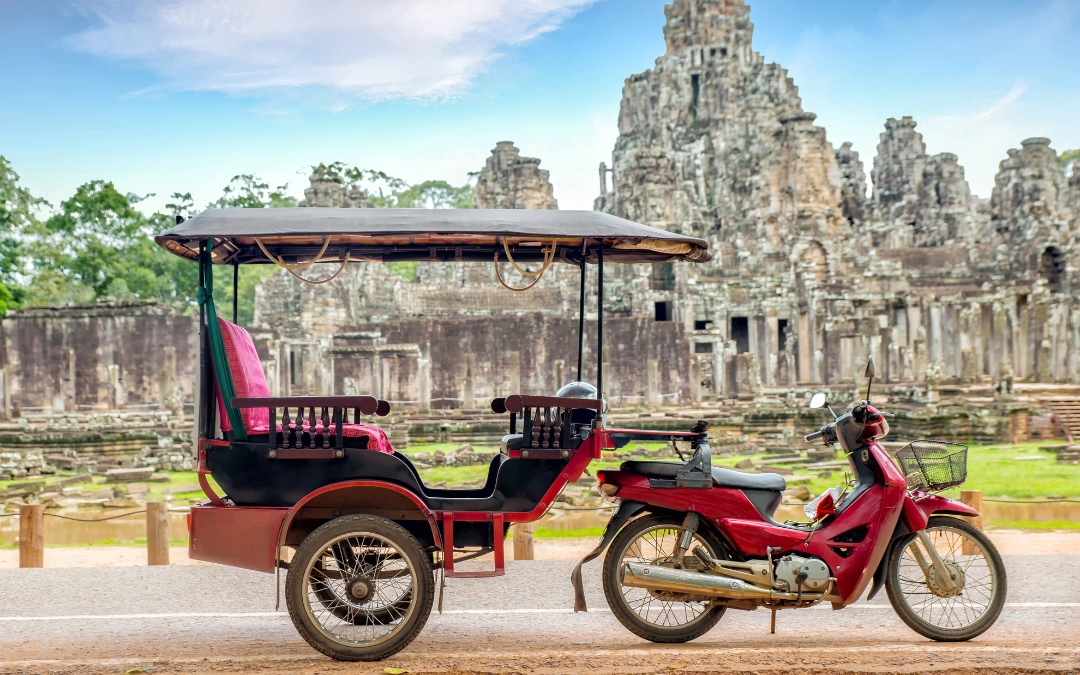
Tuk-tuks are affordable and offer a breezy local experience.
Bicycle
For active travelers, renting a bicycle offers a rewarding, immersive way to explore Angkor. You can move at your own pace, stop for photos whenever you like, and soak in the natural surroundings. That said, cycling requires a moderate to high fitness level, as the distances between temples can be long and the heat intense, especially around midday.
Make sure to bring plenty of water, sunscreen, and a good map or GPS app. Bicycle rentals are widely available in Siem Reap for around $3–$5 USD per day.
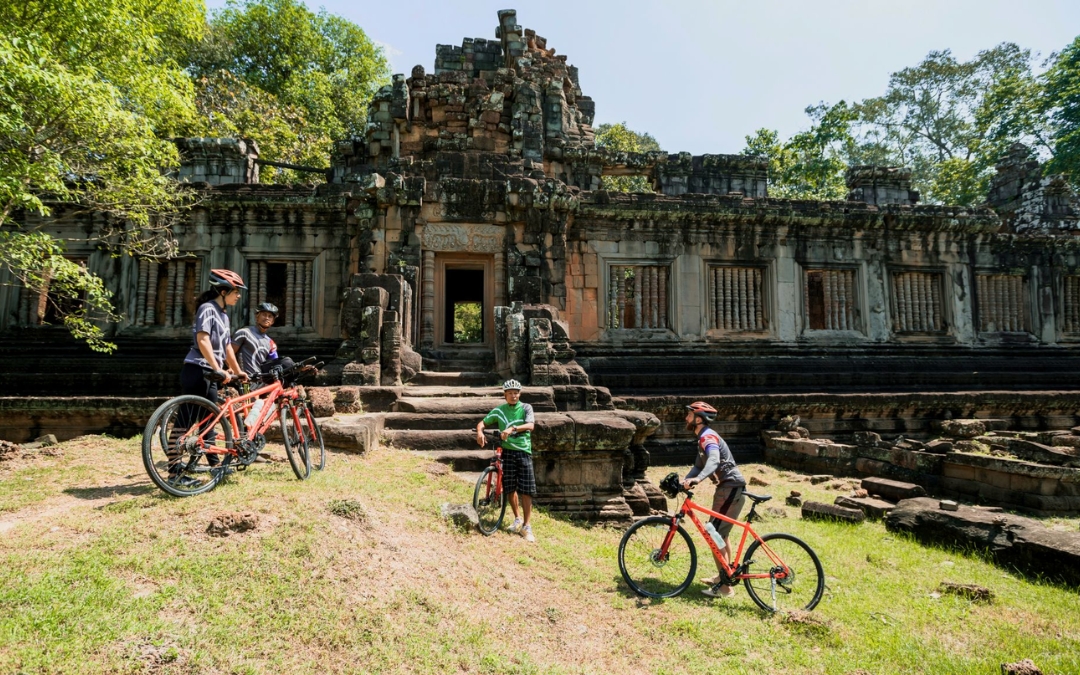
Adventurous travelers can rent bikes to explore nearby temples.
Private Vehicle
For maximum comfort and convenience, especially for families or those with mobility concerns, a private car or van is an excellent choice. With air-conditioning and a driver who knows the area well, it’s easier to cover more ground without getting fatigued.
Private vehicles can also be arranged through hotels or tour companies. This is the preferred option for those on a tight schedule, traveling with young children, or visiting during the hot season.
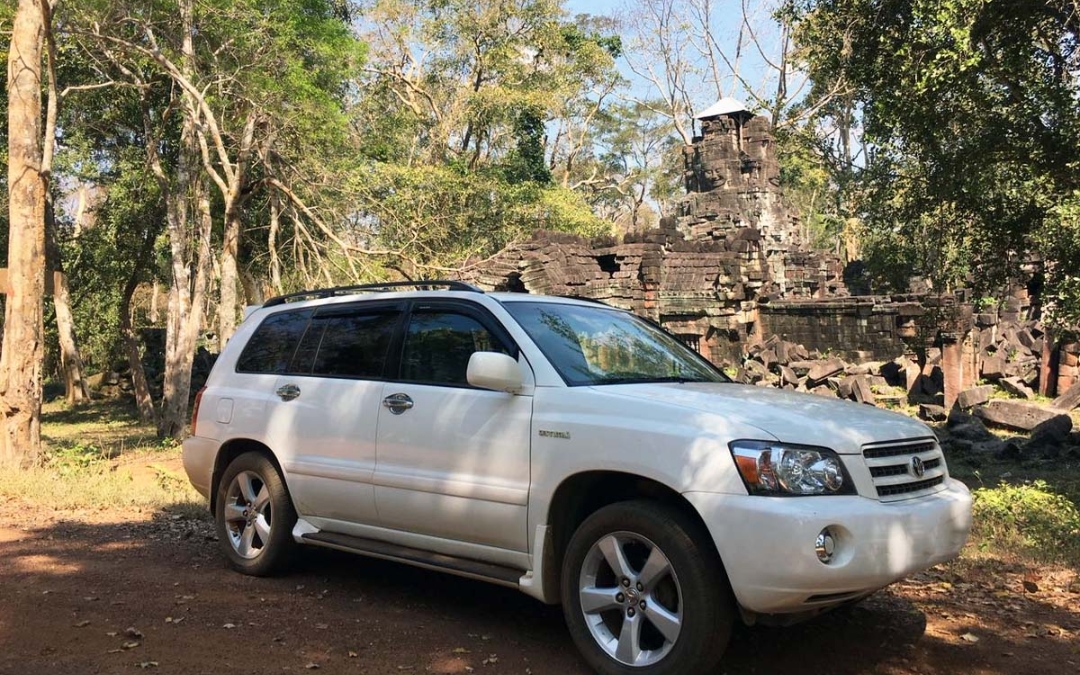
Private cars offer comfort, especially in hot weather.
>> See tour: Cambodia Ancient Temples and Pristine Beach 8 Day Tour
Best Itinerary For Your Angkor Tour
With countless temples spread across a vast area, planning your Angkor itinerary is essential to make the most of your time — especially if you’re visiting for just one day. Below is a thoughtfully paced route that balances famous highlights with hidden gems, while also taking into account lighting, heat, and crowd levels.
Early Morning: Sunrise at Angkor Wat
5:00 AM – Begin your day early and head straight to Angkor Wat for the iconic sunrise. Arrive no later than 5:00 AM to secure a good viewing spot near the reflection ponds in front of the temple — a prime location for capturing the sun rising behind the majestic towers.
6:30 AM – After sunrise, take your time exploring Angkor Wat itself. Admire its detailed bas-reliefs, climb up to Bakan (the upper level) for sweeping views, and appreciate the spiritual serenity of one of the world’s largest religious monuments.
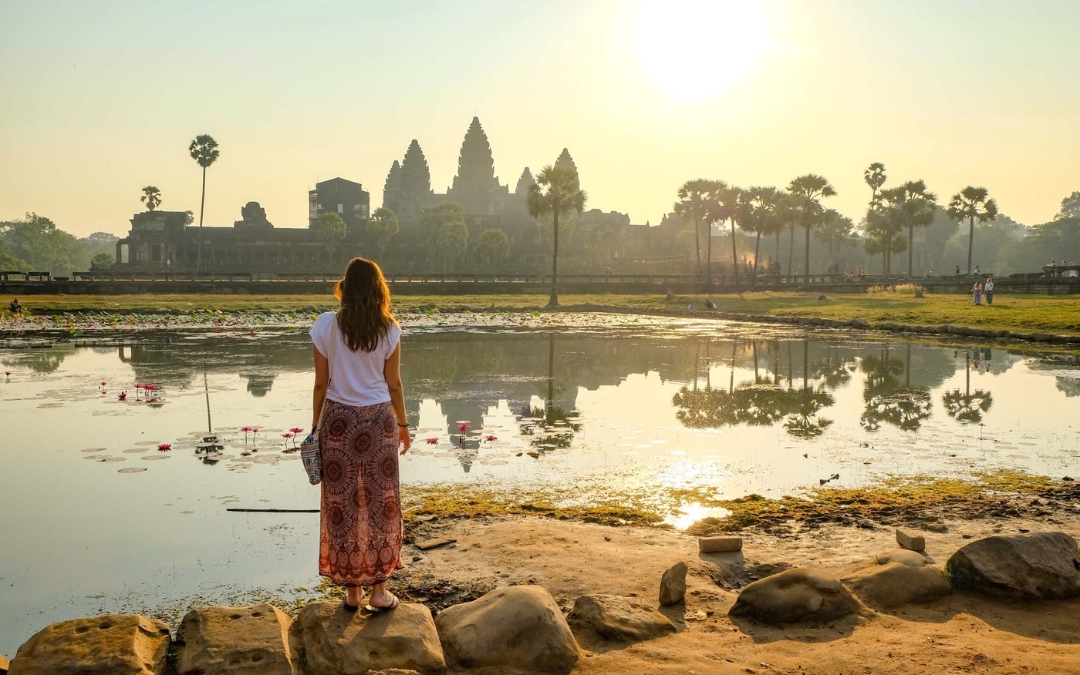
The iconic sunrise draws photographers and early risers daily.
Mid-Morning: Bayon Temple
8:30 AM – Make your way to Bayon, located in the heart of Angkor Thom. Known for its 54 stone towers decorated with over 200 smiling faces, Bayon offers an enchanting and somewhat mysterious atmosphere. Don’t miss the detailed carvings along its outer galleries, which depict historical events and everyday Khmer life.
Late Morning: Ta Prohm Temple
10:00 AM – Head south to the cinematic and atmospheric Ta Prohm, where the roots of towering trees dramatically embrace ancient temple stones. Made famous by the Tomb Raider film, this temple offers a powerful glimpse of how nature has slowly reclaimed these ancient structures. It’s one of the most photogenic — and evocative — sites in the complex.
12:00 PM – Return to Siem Reap for lunch and a well-earned rest. The midday heat can be intense, and this break provides a chance to recharge before your afternoon adventures. Most travelers prefer to dine in town, where a wide variety of cafes and restaurants offer both Khmer and Western cuisine.
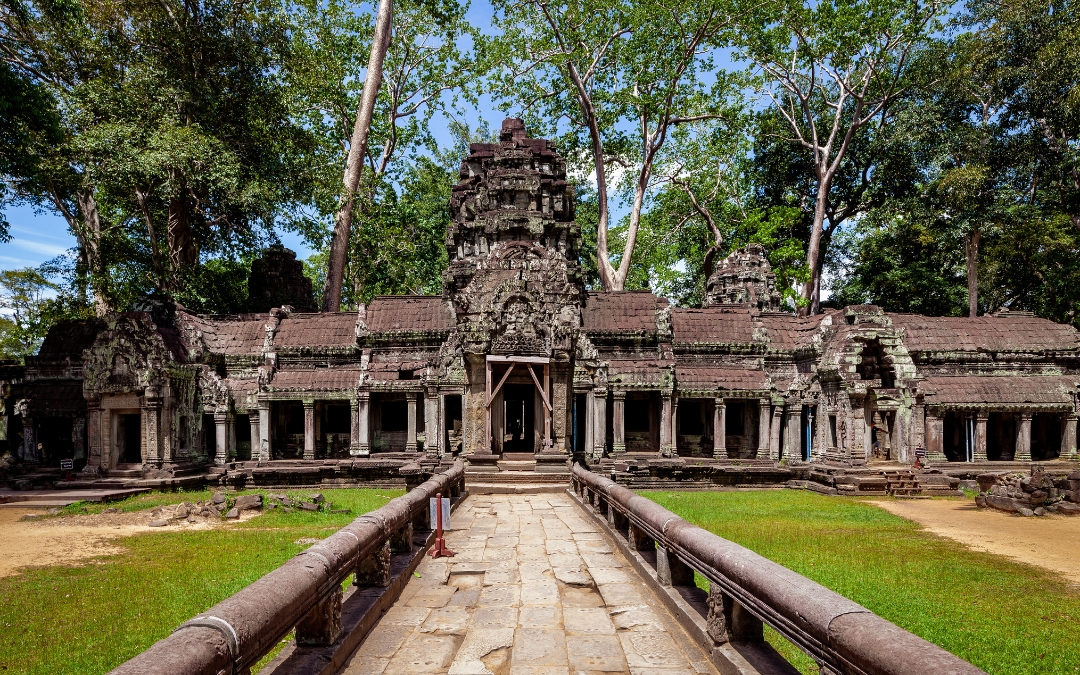
Bayon Temple impresses with its many smiling stone faces.
Afternoon: Banteay Kdei and Srah Srang
2:30 PM – Begin your afternoon at Banteay Kdei, a peaceful and often-overlooked temple located near Srah Srang. Though partially unrestored, the temple’s beautiful carvings and quiet ambiance make it a hidden gem.
3:30 PM – Just across the road is Srah Srang, a vast man-made reservoir once used for royal bathing. It’s a lovely spot to unwind by the water, reflect on your morning, and enjoy the calm views before your final temple visit.
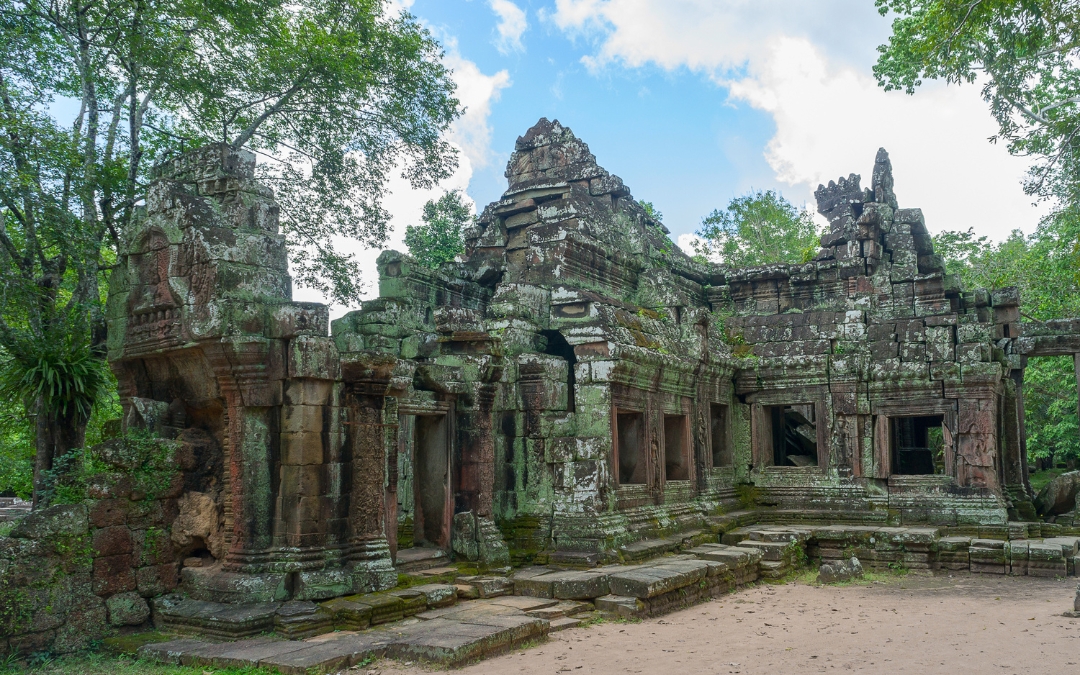
Nature reclaims Ta Prohm with giant roots enveloping ancient walls.
Evening: Sunset Options
5:00 PM – As the day winds down, make your way to either Phnom Bakheng or Pre Rup for sunset.
- Phnom Bakheng is the more popular choice, offering panoramic views over the surrounding jungle and Angkor Wat in the distance. Because of its popularity, arrive early — access is limited to a set number of visitors at a time.
- Pre Rup offers a quieter but equally beautiful sunset experience, with its elevated brick towers glowing golden in the late light.
This itinerary offers a full but manageable experience of Angkor’s most famous temples while allowing time for rest, reflection, and the magical golden hours of sunrise and sunset. It’s considered by many travelers as the best way to see Angkor Wat, especially for those with just one day to explore. For those with more time, consider extending your visit with a 3-day pass to discover lesser-known gems like Preah Khan, Neak Pean, and Banteay Srei.
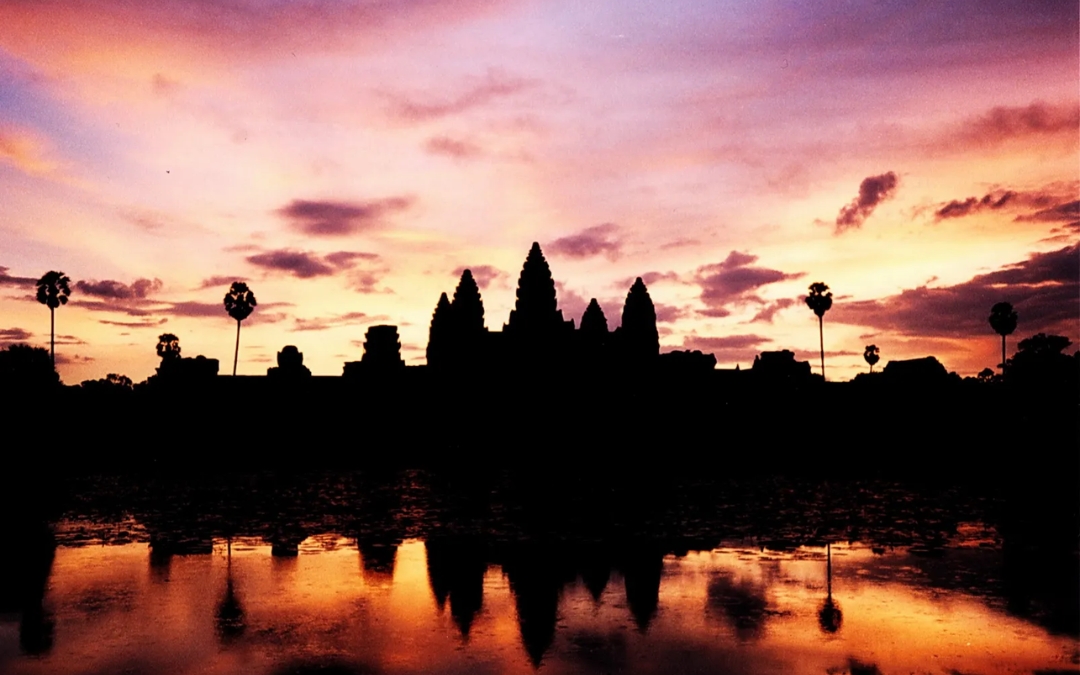
Banteay Kdei offers a quieter, less-crowded temple experience.
Insider Tips for a Seamless Angkor Experience
A trip to Angkor is a once-in-a-lifetime adventure — but with the right preparation, it can be even more rewarding. Here are some tried-and-true tips from seasoned travelers and local experts to help you explore the temples comfortably, respectfully, and with unforgettable moments along the way.
Avoiding crowds
Angkor Wat and the main temples are no strangers to large tour groups, especially between 8:00 AM and 11:00 AM. To enjoy a more peaceful experience:
- Start early — Sunrise at Angkor Wat is popular, but if you continue directly to Bayon or Ta Prohm right after, you will often beat the crowds arriving later.
- Visit lesser-known temples like Banteay Kdei, Preah Khan, or Ta Nei in the mid-morning or afternoon — these gems are often overlooked and provide a more serene atmosphere.
- Reverse the route — Most tours follow a fixed circuit. Going in the opposite direction (counter-clockwise on the Grand or Small Circuit) can help you avoid the masses.
Photography tips
Angkor offers endless photo opportunities, but lighting and timing make all the difference:
- Best lighting is in the early morning and late afternoon, when the temples glow under soft, golden sunlight.
- For classic sunrise shots at Angkor Wat, arrive before 5:00 AM and position yourself at the left reflection pond (facing the temple) — it’s the most popular spot with a symmetrical view.
- Use a wide-angle lens for capturing temple interiors and towering structures.
- Avoid using flash inside dark temple corridors — it can disrupt the experience for others and washes out fine carvings in your photos.
- Be patient and wait for quiet moments — sometimes a few extra minutes can get you a clean, crowd-free shot.
Hydration and Snacks
Exploring the temples can be physically demanding, especially under the Cambodian sun:
- Bring a refillable water bottle, and keep sipping throughout the day to stay hydrated. Bottled water is available near most major temples, but prices are higher.
- Pack light snacks such as bananas, granola bars, or nuts. There are small food stalls around some temples, but options can be limited.
- If you’re cycling or exploring independently, plan breaks in shaded areas and avoid the midday sun between 12:00 PM and 2:00 PM whenever possible.
Respectful exploration
Angkor is not only a historic site but a sacred place still used for worship by locals and monks. Respectful behavior is essential:
- Dress modestly — follow the temple dress code by covering shoulders and knees.
- Avoid loud conversations or music, especially near shrines and active prayer areas.
- Do not touch carvings or climb on restricted sections of temples. Preservation efforts are ongoing, and even small damage can have lasting effects.
- If you encounter monks, feel free to greet them with a smile or a respectful bow. Ask permission before taking photos, especially of monks or local worshippers.
Extra Tip: Bring a Small Day Bag
A compact backpack is perfect for carrying your ticket, water, sunscreen, snacks, a rain poncho, and extra camera gear. Make sure it’s not too heavy — you will be wearing it for hours, and some staircases inside temples can be steep and narrow.
>> Read More: How To Make The Most Out Of One Week In Cambodia?
See Angkor Wat the Way It Was Meant to Be Seen
Exploring Angkor Wat is more than just ticking a box on your travel list — it’s a journey into the heart of Khmer civilization, where ancient stone meets living culture. With careful planning, the right local knowledge, and a spirit of respect, you will walk away not only with beautiful memories but with a deeper connection to one of the world’s greatest wonders.
Ready to make your Angkor adventure extraordinary? Let Asia Pioneer Travel craft a personalized journey just for you — with expert guides, curated itineraries, and local insights that ensure you experience the best way to see Angkor Wat. Reach out today, and let us help you bring your Cambodian dream to life.
